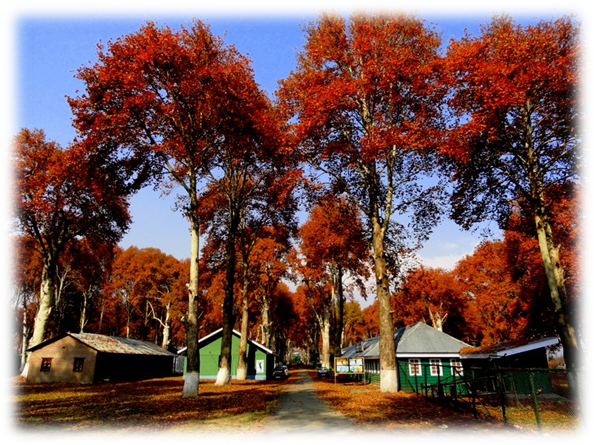Chinar
The heritage tree
Chinar, (Platanus orientalis) is a large deciduous tree and is considered as a living heritage of Kashmir. The shedding of chinar leaves marks the onset of autumn in the valley. The tradition of planting Chinars in Kashmir took deeper roots during the Mughal era. Today the chinar population in Kashmir is declining at a rapid rate.
Locally,
chinar is called 'Boon' or 'Buen'. Chinar originally is a Persian
word meaning 'blaze or fire' for changing its leaf color to red, yellow and
amber during the autumn season.
This
majestic tree can be found everywhere in Kashmir and is very popular amongst
the locals, who love to sit under its shade. Kashmir also
has the World’s oldest chinar tree in Chattergam village of Budgam
which is believed to be planted in 1374 by Syed Abul Qaim Hamdani (R.A).
Chinar
trees were brought from Persia. Mughals were very fond of the tree and
were thus declared as the 'royal tree'. Akbar alone is said to have
planted around 1200 trees. Jahangir put forth the concept of Char Chinar
(planting of four Chinars on four corners).
Despite
the laws imposed by the government like ban on felling and lopping of chinar trees,
it is heartbreaking to know that illegal felling of these trees still
continues. The population of the trees has dwindled down from around 42,000 in
the 1970s to about 38,401 in 2007. People and administration cut down these
trees for construction and for widening of roads. However, various efforts are
taken by the state to revive this heritage. Chinar tree requires to be
registered and considered State property. Each year Chinar saplings are being
planted on 21st of March (chinar plantation day).Removal
of signboards installed on the chinar trees under Jammu and Kashmir
Specified Trees Act, 1969.
The
Chinars beauty is truly incomprehensible. I really hope that this
legacy never dies and its trees always stand tall in all their magnificent
glory.
Rahila Muzafar (M.Sc. Student)

No comments:
Post a Comment